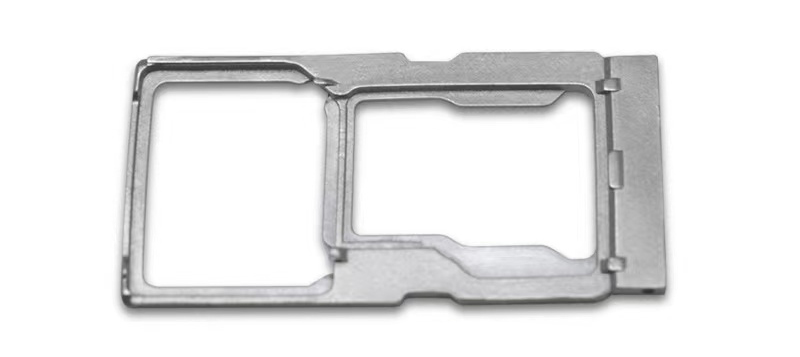Recently, Deloitte released the Connectivity and Mobility Trends Report, which showed that 67% of surveyed users said they would choose to buy a 5G network-compatible phone as soon as it appeared, and 16% of surveyed users said that they would choose the next phone with 5G capabilities. With such a strong will, consumers are bound to set off a wave of 5G replacement.

On December 26, OPPO released the Reno3 series in Hangzhou, and both models support dual-mode 5G networks and are equipped with video super double anti-shake function, focusing on video applications in the 5G environment.
In addition to OPPO, major cell phone application manufacturers at home and abroad have also launched corresponding products for the 5G market.2020, 5G applications will usher in rapid development next year, and relevant organizations predict that 5G smartphone shipments are expected to reach 300 million next year.
Apple MIM button,
card slotAlong with the development of the 3C electronics industry, many supporting industries will also usher in unlimited industry opportunities, in which MIM as "today's hottest parts molding technology", mainly used in smart phones, the card bracket, the camera ring metal protection frame, connector interfaces and other parts, but also for a variety of smart phones in 2019 to provide a "lift camera". The "Lift Camera" part is also available for a number of smartphones in 2019.
"Invisible" in the Reno3 Pro bottom of the card tray is
MIM products!
Behind the glamor of 5G cell phones, is the MIM "pay"!
MIM (Metal Injection Molding), that is, metal powder injection molding, suitable for mass production of small, precise, three-dimensional shape of complex and special performance requirements of metal parts.
In China, 3C products is the largest application of MIM in the field of cell phones, communications, fiber optic industry, the rapid development of the MIM industry has brought a huge amount of opportunities. 3C industry parts require high precision, durability, and the characteristics of the MIM product is in line with the most, is often used to make cell phone card bracket, slot, structural components, connectors, shaped parts, vibrators and other products.
Don't know much about this process? No problem, I will immediately tell you about it!
MIM is a molding method that injects a plasticized mixture of metal powder and its binder into a model with high technical content. Simply put, MIM is the process of mixing metal powder and binder together and processing them into various shapes of metal devices.
MIM Process
The finished products made by MIM have high density, high precision and excellent surface finish. If you don't believe me, you can press out the card tray in your cell phone to see if it is very mini, very delicate, and not solid~.
What are the advantages of MIM over other processes?
MIM technology combines the advantages of powder metallurgy and plastic injection molding technology, breaking through the traditional metal powder molding process in the product shape limitations, while using plastic injection molding technology can be a large number of high-efficiency molding parts with complex shapes of the characteristics of the modern manufacturing of high-quality precision parts of a near-net molding technology, with conventional powder metallurgy, machining and precision casting processing methods can not be compared with the advantages. Processing methods such as conventional powder metallurgy, machining and precision casting can not be compared with the advantages.
First of all, before the maturity of MIM technology, there is a traditional powder metallurgy method - PM. its metal powder is usually 50-100 microns, compared with MIM 0.5-20 microns of powder particles, much larger. So for small parts that require high precision and freedom of shape, the traditional technology can't help.
Secondly, there is the traditional machining method - CNC, MIM and CNC, one is "plus" and the other is "minus", two different technical languages, so that they are good at each other in different worlds. MIM and CNC are two different technological languages, which make them good at different things. Let's say, like giving you a big stone, let you carve a statue, it should be no problem, but let you carve into a toothpick ...... is not that the cost is too high?
Therefore, for the size of ultra-small and three-dimensional structure of complex parts, MIM process occupies a natural advantage.
Edited by user Tuesday, November 07, 2023 7:51:15 AM(UTC)
| Reason: Not specified
